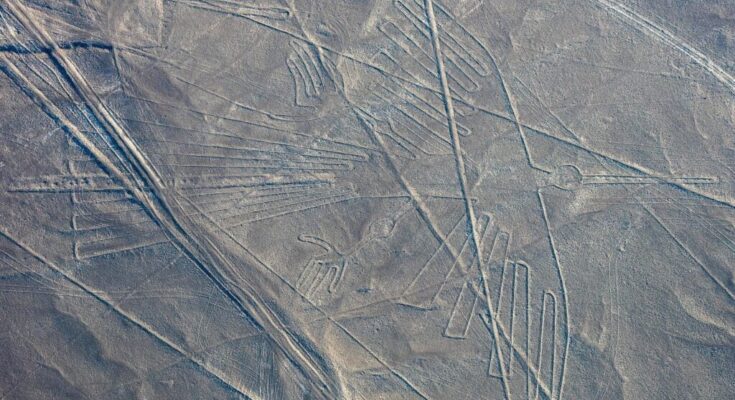
The Nazca civilization thrived on Peru’s southern coast for 850 years, creating the mysterious Nazca lines that can still be seen today.
Famous for their famous desert geoglyphs, the Nazca were an influential culture that lasted in Peru’s arid southern desert coast and the western slopes of the Andes from around 200 BC to 650 AD. Against all odds, this civilization succeeded, leaving behind beautiful textiles and pottery on top of the geoglyphs that mystify archaeologists today.
How did the Nazca civilization come to be?
Before the Nazca, there were the Paracas. The Paracas people came from the Pisco and Ica valleys of Peru. According to DNA studies, the Paracas and the Nazca are directly linked, showing that the Paracas are the progenitors of the Nazca people.
Archaeologists have also discovered similar artifacts and structures in sites from both cultures that further prove their connection. Both cultures recognized the importance of irrigation, as their structures showed they had a constant water supply, and their artifacts showed they believed it came from their ancestors.
Archaeologists believe the Paracas migrated south from their lands to the valley of Nazca and developed new cultural traditions. The main center of the Nazca civilization, Cahuachi, was where the water supply was distributed and where the people performed many ceremonies. It is the starting point of the infamous Nazca lines.
The mysterious Nazca lines
Vast plains, known as Pampas, lay between the Andes and Peru’s southern coast. During the Nazca civilization, the pampas were populated with boulders and rocks. They were also not the deserts they are today and were fed with steady, seasonal rainfall, which fed the rivers that zig-zagged their way through the plains.
The Nazca civilization saw the Pampas as an essential part of the region, where they could practice ceremonies to worship their gods. The flatland of the plains served as the perfect place for them to do grand works for their gods. As such, they drew hundreds of their massive lines throughout the land.
The lines were made by removing the top layer of the earth, revealing the lighter-colored sediment underneath. They could create images by doing this in lines and over large areas. Over time, the winds blew small stones over the lines, oxidizing them and making them darker than the surrounding area.
Through research, historians and archaeologists have inferred that the Nazca civilization performed rituals with music. They marched and danced along the lines while they played music. They have also found that the land was walked on heavily, along with ceramics and possible remains.
What happened to the Nazca?
Climate change is believed to have caused the end of the Nazca civilization. Shortly after the Nazca settled in their home, the land began experiencing desertification. The slow process slowly altered the landscape, forcing the Nazca to flee to higher altitudes.
This departure, along with an increase in war throughout the land, caused the culture to fade away with the land. Deforestation could have also contributed to, or at least accelerated, climate change in the area. Regardless, the Nazca civilization forever left its mark with its ceramics, textiles, and geoglyphs.



